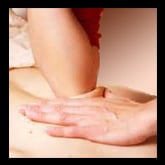
What is deep tissue therapy?
Deep tissue therapy is a firm, full body massage commonly referred to as a therapeutic massage. This type of massage requires deeper pressure. It often focuses on specific points or areas of concern.
Note: If you have never had a massage before, we strongly recommend that you start with a Swedish massage.
Benefits
Deep tissue benefits might depend on the client. They can range from initial relaxation and reduced stress, to improved circulation and flexibility.
This type of therapy is an excellent massage technique for releasing physical tension within the muscle. This type of massage is perfectly suited when focus on a particular area is desired.
An example might be a shoulder that has been virtually immobile. Possibly due to ordinary, everyday overuse and stress but not necessarily from a previous injury or surgery.
In this example, the massage therapist works by applying concentrated pressure, stripping and stretching techniques. Combined, they will improve flexibility and release muscle restrictions.
Additionally, this approach may often restore complete use of the shoulder. Of course, that result will depend on the initial situation and the progress allowed throughout the session.
The beauty of deep tissue is that it can be very therapeutic. From the neck to the toes, this type of massage will truly reduce stress.
If you prefer a really firm massage with extra work on a specific area, then deep tissue massage would be an excellent choice.
What to expect from deep tissue therapy
Deep tissue is generally available in 50- and 80-minute time slots. It is a full body massage, unless requests for specific area work is specified.
If seeking actual therapy in the session (such as in the previous example), we strongly suggest booking the longer massage. This allows the massage therapist proper time to work on the area(s) of concern.
Your provider will ask you to lie on the table either face up or face down and underneath the covers provided. You will disrobe for this appointment after the therapist leaves the room. Always tell your therapist if you bruise easily, as this treatment uses more pressure than normal.
Deep tissue can be very intense to receive. To help yourself (and your body) relax, breathe deeply throughout the massage. Whenever the pressure is intense, deepen and slow your breathing.

Your body will then relax with your breathing. This also allows the massage therapist to accomplish more for you.
Techniques used in deep tissue massage
The massage therapist employs a variety of strokes and pressure levels to release tension and restore flexibility.
Depending on the therapist, you can expect a combination of massage techniques to be implemented throughout the massage.
Some of the more common techniques used might include point work via neuromuscular therapy, reflexology, shiatsu or along the acupressure points with general stretching.
Always tell your therapist if the stretch or pressure is uncomfortable. Let them know and they will ease up. They are there to help–not hurt you. Additionally, it will also prevent deep tissue bruising.
After your deep tissue massage and how often to have one
After your deep tissue massage, your muscles might be tender. This is normal, and should subside after a day or so. You might be lightheaded. This, too, is normal and will pass quickly.
Drink plenty of water to flush out the toxins just released from your muscles. Avoid drinking alcoholic beverages and the intake of caffeine or processed foods for the rest of the day.
Relax and take it easy. Give your body and the muscles time to recover from the therapy received.
Consider suggestions and advice your therapist provided. If stretches or maintenance ideas for how to destress were on the list, then incorporate what you can.
Take it upon yourself to research and implement stretches to keep the areas of concern flexible. Doing so will help maintain a full range of motion.
A favorite stress relief technique is a hot Epsom salt bath. A 20-minute soak at the end of a day, or after receiving deep tissue therapy, is recommended. Your sore, tired muscles will thank you.
In addition, this hot water therapy also helps to relieve emotional stress. Try to make time for this fabulous natural stress reliever, the benefits may surprise you!
Deep tissue therapy, if applied for corrective results, can be too intense to go very often. Once a week is probably about it for the average person.
However, if you enjoy deep tissue only as a relaxing firm massage, you could go more often. Simply pay attention to how you feel. Consult your massage therapist for suggestions.
Back to Top
Back to Types of Massage
As an affiliate, we earn a small commission for qualifying purchases via links on this site. The commission is paid by the advertiser and does not affect the price of the product or cost the consumer. It is how we help pay to keep this site free to use!
